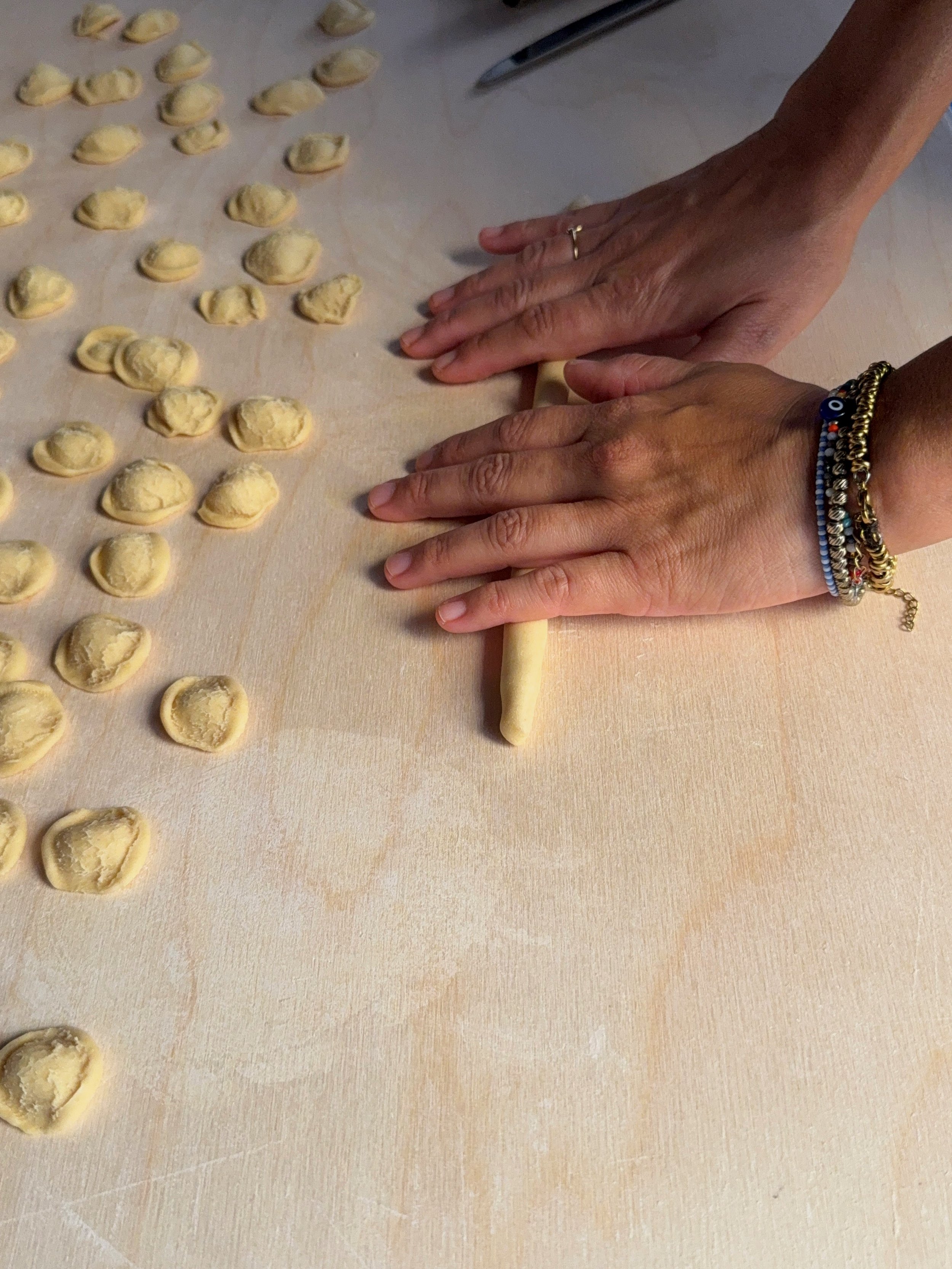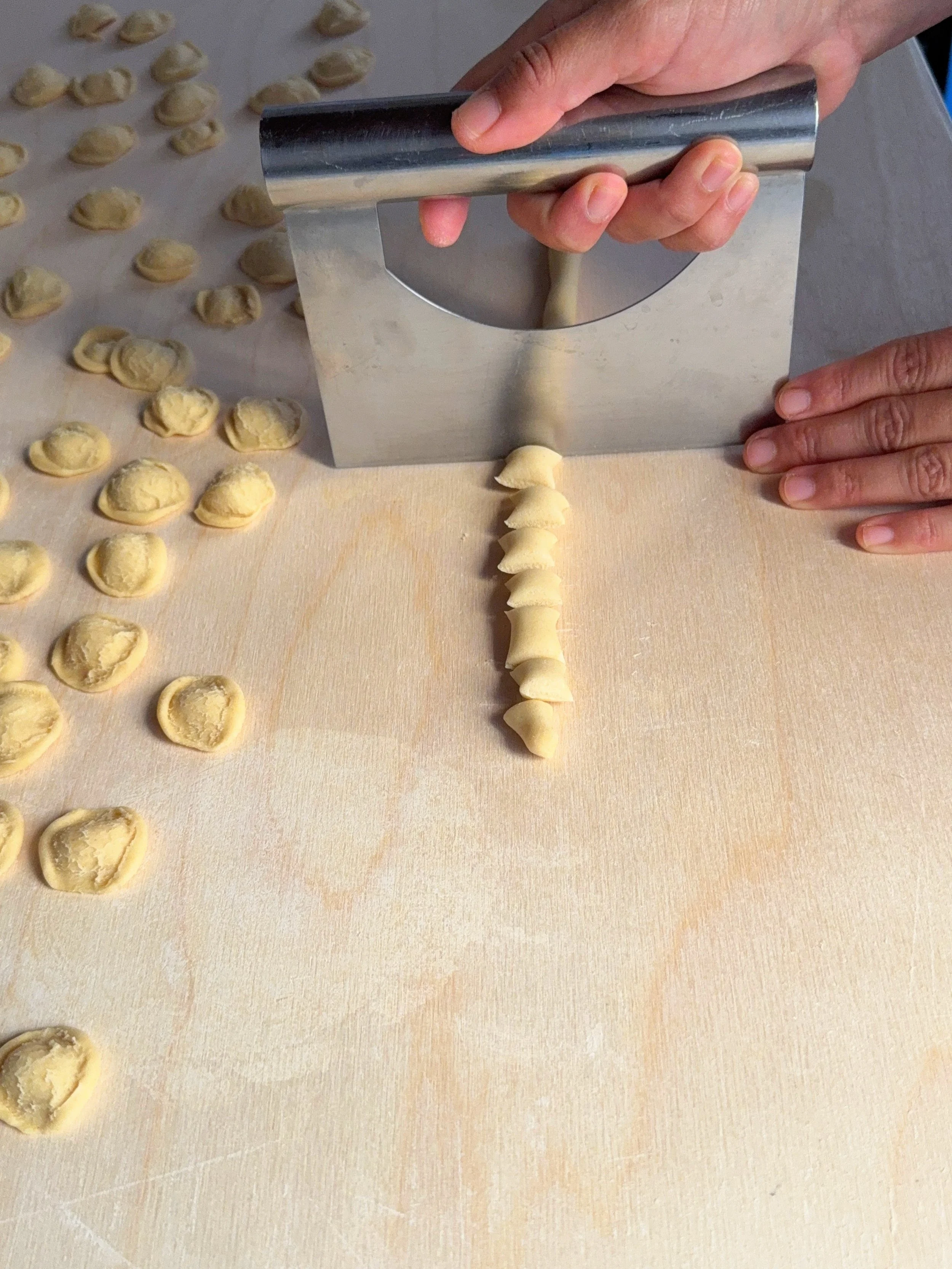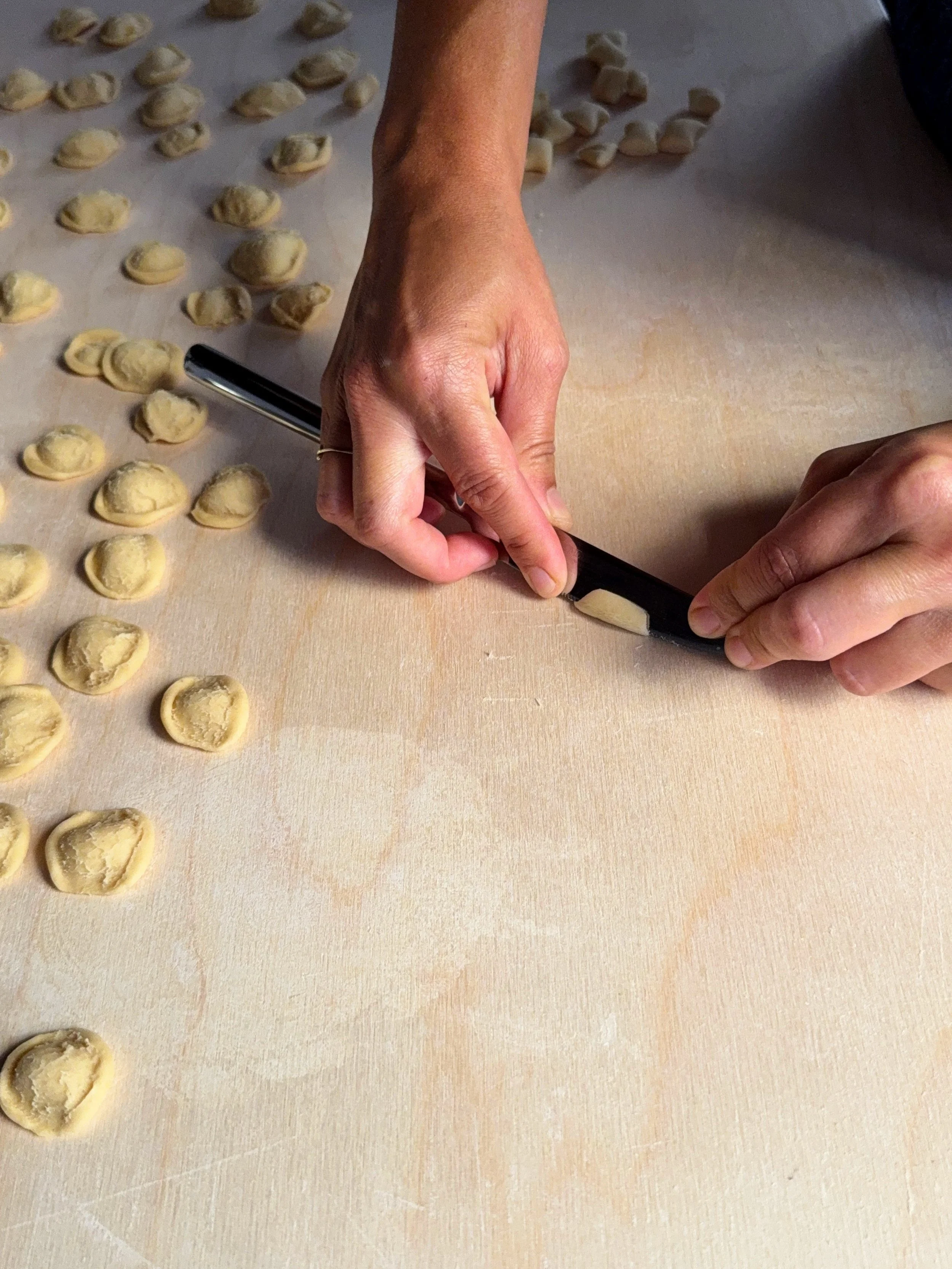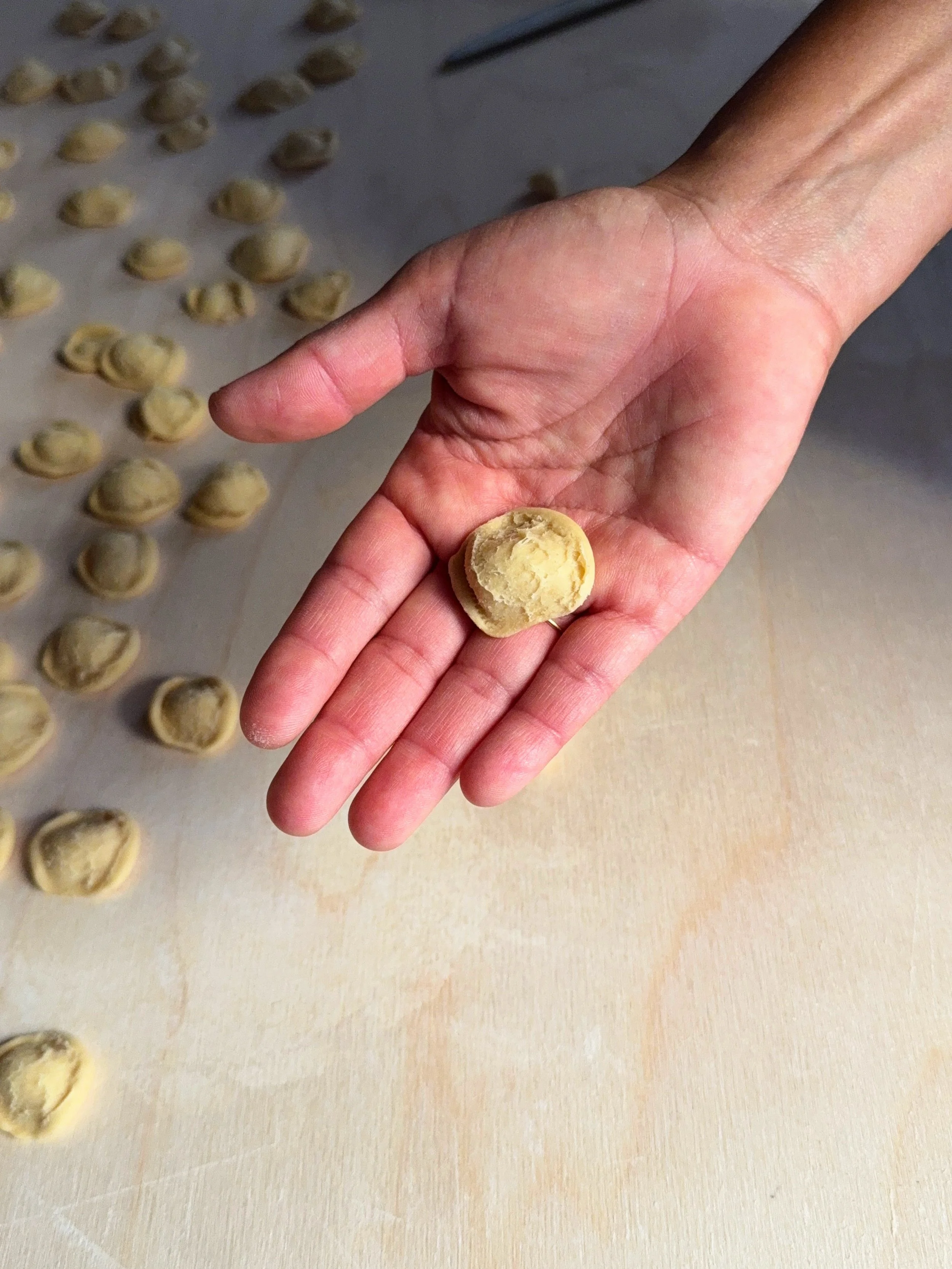How to Make Orecchiette
Orecchiette
Orecchiette is a pasta shape that originates from Puglia. It’s one of the pasta shapes that doesn’t require a pasta machine and is very simple to make. All you need is semola, water, a knife and a wooden board. No pasta making equipment needed, and it’s very simple to make. It’s made with semola and water in a 2:1 ratio of semola:water.
For one portion that would equal 100 grams flour, and 50 ml water. I always say that pasta is by feeling, so this will be your starting point and you make adjustments as needed. If the dough is dry you add some water, if it’s sticky you work in some flour.
Orecchiette is one of the types of shapes that are dragged across a board. I use a special pasta making board called an assepasta or spianatoia. As you drag the pasta shape across the board with the knife, it creates crevices and surface area for a nice texture when paired with a sauce. In the absence of a pasta board you can easily use a wooden cutting board. It’s important to not flour this dough when shaping. The grip of the unfloured dough while using the knife to drag the shape across the wooden board is what gives it the nice grippy crevices on the exterior.
Semola & Water
Method:
Measure the flour for the number of portions you’re making and lay it onto your work table. Make a well in the middle and add the warm water. Using a fork and moving in a circular motion slowly incorporate the flour from the inner sides of the well with the water. Once the water has essentially appeared to have been absorbed by the dough, clean off any excess flour from the fork and work only with your hands from this point. Use your fingertips to lightly press or smush the flaky dough together. After a couple minutes it will become a more cohesive dough and you will switch to kneading. With kneading you’re really using the heel of the palm of your hand to push away and back, with a slight turn. You knead for a few minutes until you achieve a homogeneous dough which is soft, yet not sticky but very well combined. Wrap the dough in plastic wrap or you can place it on your counter with a bowl placed upside down over it. The dough shouldn’t be exposed to air so that it doesn’t dry.
Semola and water dough
After it’s rested for 30 minutes you can begin rolling out the dough.
Take a strip and roll it under your hands with a light pressure. Move your hands across the strip to make sure it rolls out evenly into little serpentini or snakes. Cut the strip into small little pillows that are about ¾ inch or 2 cm in length. Take a regular butter knife and hold it with both your hands, and place the center of the serrated edge at the top of the cut side of the little pillow. Press down with a light pressure, while simultaneously dragging towards you. Flip the pasta to invert it on your thumb so that the textured side is facing out, and accentuates the orecchiette shape.
Don’t be discouraged if the first one doesn’t look so pretty. It’s a hand movement that takes a bit to get down, and the more you practice the better the shape gets. After all, it's handmade pasta and imperfectly perfect. Which brings me to another note, because it’s made with semola flour it is a firmer dough. Also, each one is individually shaped so they’re not the exact uniform thinness. This means that the cooking time can vary drastically as we all have different hands, different pressure applied while dragging etc. You cook them in salted boiling water like all pastas but you really have to taste them to see when they’re al dente. I start out by cooking them for 6 minutes, which is when mine are usually al dente, and then I finish cooking them in the sauce for another minute. Sometimes 6 minutes aren’t enough and I need to cook them for longer. It kind of depends on each time, and you really have to taste to see when they’re done.
These are great with a classic tomato sauce, but my all time favorite is with sausage and broccoli rabe which is DIVINE!
Have fun making orecchiette! And remember don’t get discouraged after the first one, keep practicing and by the time you tackle the first batch of dough you’ll already see improvement.
Orecchiette on drying rack









